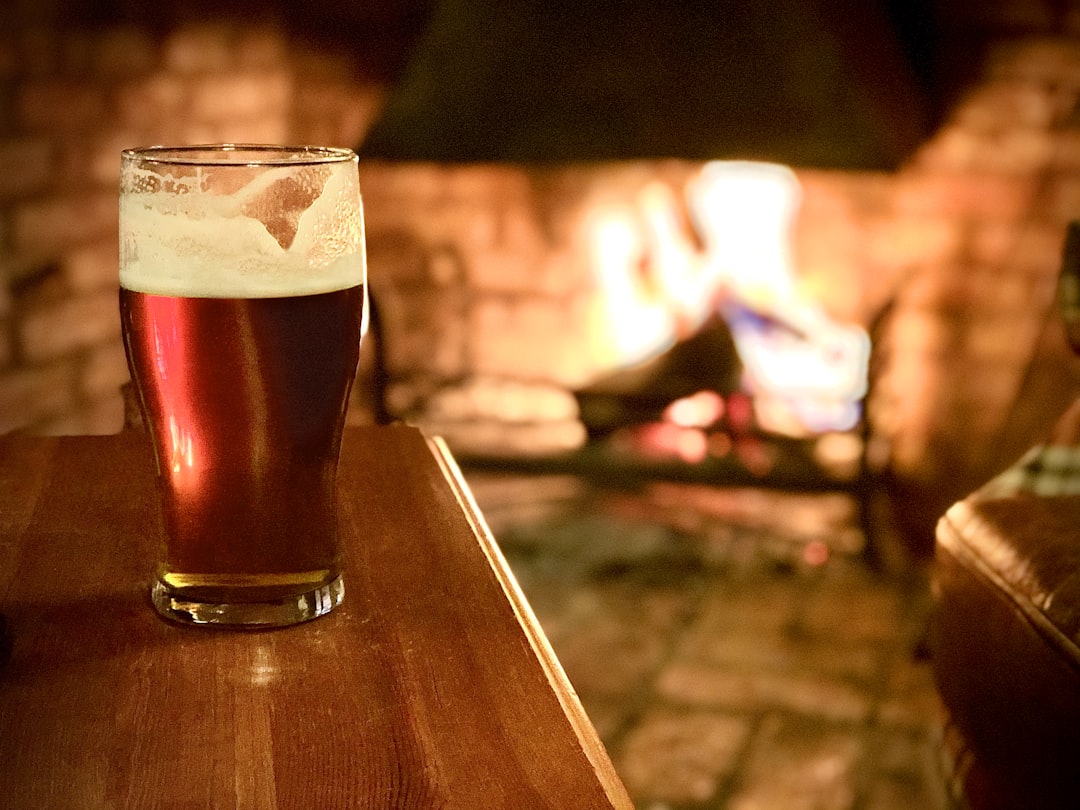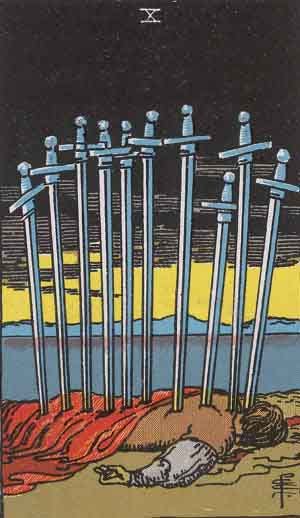72. Beer Educator Molly Lamb on Winter Warmers
A holiday-perfect guest feature; plus an exciting Patreon donation goal reached; and tarot for accepting and recovering from a difficult situation.

‘Tis the Season for Winter Warmers
I’m thrilled to present another guest contributor this issue, who had a topic in mind to cover that’s absolutely perfect for this time of year. I connected with Molly Lamb on the NAGBW Slack—yay for the NAGBW community!
Molly is a beer educator who’s completed craft beer courses online at San Diego University and Cornell University as well as a volunteer program working in production at Rocky Mountain Brewery in Colorado Springs. She’s the original host of the Brewvana podcast, Brews Less Traveled, has poured at multiple breweries, and spearheaded various beer school programs. Molly teaches virtual craft beer education classes to bars and restaurants throughout the country—to find out more and work with Molly (including on writing projects!), head to her website here. Follow her on Instagram here and reach her at craftbeerclass@gmail.com.
Without further ado, here’s Molly’s fun and informative guide to winter warmers.
Walking in a Winter Warmer Wonderland
“I’ll have a Wassail,” are words you hardly hear spoken at a bar, at least in America. This spiced and malty beer was born in England. (Pronounced “Whoss-al,” and translates to ‘be well’; if only all beer name origins were that polite—leave it to the British to be nice even when drinking.)
Wassail is named after the British tradition of Wassailing, which involves singing and drinking to the prosperity and good harvest of apple trees. The idea is to give life to the trees, and scare away any looming dark spirits. To me this sounds fabulous. I’ll indeed have my Wassail with a side of witchcraft, bartender!
It wasn’t just the English that loved a rich and malty brew. The Scandinavian countries of Denmark, Sweden, and Norway actually made these beers a mandatory part of their holiday “Jul” or Yule celebrations. They would offer these dark beers to the Norse Gods as part of their Viking traditions.
The English-born Wassails are the precursor to the more American version we call a Winter Warmer. These beer styles are amber / brown to almost black in color, moderate to high ABV ranging from 5.5-8%. What makes these styles unique is the use of baking spices like clove, cinnamon, and nutmeg used commonly in the more traditional English versions. (The Reinheitsgebot gods are turning in their graves.) The American versions often get their “spice” flavor and aroma from hops; Kent Goldings, Chinook, or Centennial would be nice hop options.
Drinkers are meant to feel a warming effect from the slightly higher alcohol which makes these beers the perfect counterpart to low temperatures. Dropping just in time for the holidays, these are also the perfect social lubricant to deal with Uncle Randall’s political rants.
Winter Warmers are sort of a vague beer style since they are also called Christmas beers or holiday ales. They really just encompass non-porter styles that are also dark, often spiced, and released in the winter. You can, however, certainly have a spiced stout and call it a Winter Warmer, too. It’s the spice that gives it the separate category. Plus, the beer police are pretty relaxed this time of year.
I once had a “Holiday IPA” from a great brewery in San Antonio. While the beer was nice, I felt this was cheating since it was “spiced” with hops, and IPAs always have a heavy dose of hops. Plus, IPAs are not a dark beer style. But, I get it; put “holiday” on anything this time of year and it will sell.
I spoke with Jarrod Szydlowski, head brewer at Wanderlinger Brewing Co. in Chattanooga, Tennessee to get his thoughts on brewing this seasonal style.
“From a brewer’s perspective, there is a lot of possibility in designing a Winter Warmer because of the sheer diversity of ingredients to combine [and figure out the correct proportions]. For example, cinnamon sticks contain a fair amount of tannins which can lend an unpleasant, medicinal bitterness to a beer if they are used in excess, boiled too long, or if the beer isn’t conditioned properly.
“Sourcing is also a major consideration when using spices. The quality and strength of spices can vary considerably from one supplier to the next. To control for such variability, brewers often make extracts or concentrated teas from spices and flavor additions so that they can dose a beer incrementally.”
Fa la la la laaaaa—let’s talk about glassware and food pairings.
Glassware is important—not the most important thing in my opinion, but it's fun, and can certainly enhance any beer style. I’d recommend a goblet or a snifter for your higher alcohol and / or barrel-aged Winter Warmers. The stem will look elegant at the holiday table next to the wine snobs. Plus, you can swirl to open up the malt profile therefore helping balance the alcohol, and open up common vanilla aromas from the barrel. A nonic pint is suitable for the lower ABV choices. The protruding top enhances aroma, and offers better head retention.
As far as food pairings, I’ll be honest: a spiced beer would not be my top choice with food. You can definitely go like for like with a pumpkin pie, and match the sweet spiciness of the two. I would also recommend it with a fruit pie. For the main course a tenderloin or roast beef would pair well. I would avoid it with a salty ham, though. Save your bitter beers for salt as the salt will neutralize bitterness. It will likely overpower turkey as well. Stick with savory meats for a rich Winter Warmer.
For drinkers wondering how to select a good Winter Warmer at the bottle shop without the benefit of sampling, Jarrod suggests finding an established brewery that has been able to improve the recipe over time (not assuming first time releases won’t work out palatable of course). Also, try noting if the brewery discloses the origin of their ingredients. Avoiding styles that seem “too busy” could decrease the margin for error as well.
So, my beer friends, may your winter be warmer with this delightful approach to darker beer styles during the cold months. Stay merry, drink up, and remember life’s too short to drink crap beer.
Cheers!
Patreon Goal Achieved!
One of my Hugging the Bar Patreon Goals was to reach $200 in cumulative earnings and then donate $100 of that to the Michael James Jackson Foundation for Brewing & Distilling. Just in time for Giving Tuesday, that happened! Publicizing that I made a donation feels weird and ick, however, I’m doing it because that’s the kind of transparency involved in running a Patreon, and more importantly/excitingly, look what you patrons helped do! This is exactly the kind of thing that motivates me to keep Hugging the Bar churning. And so, two things: THANK YOU to Hugging the Bar’s Patreon patrons, and if this makes anyone else out there decide to become one, how great would that be? We’ve still got more goals and more work to do giving to causes that promote inclusivity and equity in beer. (Also, fittingly for this issue, Patreon patrons help me commission work like Molly’s!) I’ll be creating more milestones in 2023. Plus! You get fun perks when you become a patron, like free swag, a merch discount, and a free personalized tarot reading—folks, the new year is an excellent time to get a free tarot reading!
Beer Tarot!
This week, I pulled the Ten of Swords.
Swords is the suit of intellect and decisions. This card in particular deals with painful endings, loss, betrayal, and general…bad times, sorry to say. It often comes up when something painful has happened / you’ve experienced some kind of loss, especially when this was unexpected. It can be an actual death, but also losing a job, a relationship ending, a project ending, being hurt by a friend, etc. The aftermath is probably that you’ve been left reeling, hurt, upset, and not sure how to handle it. The Ten of Swords would like to remind you that shit happens—and we (“we” being the card and I, I guess?) don’t mean that in a dismissive way, but in the way that, yeah, bad stuff is always going on, isn’t it? We can’t control it, but we can control our reactions to it.
That doesn’t mean you don’t get to wallow, dwell, grieve, feel sorry for yourself, mourn, or any / all of the above. But the first step, says the Ten of Swords, is to accept your circumstances. When this card comes up, it usually means the shit hitting the fan has concluded, so you can breathe and, however you need to do and however much time you need to do it in, get to a point where you understand this is the reality of the situation. And then you can decide how and how quickly to move on, with any amount of self-care and any kinds of actions and conversations you feel would bring you some kind of peace. You couldn’t control that this thing happened to you, but you can control how you respond and how you get on a track to improving your situation. If a friend betrayed you, do you want to talk to them about it, fight it out, have a good cry, work on things, never speak to them again? As always with tarot, a big theme here is thinking about all the options and envisioning yourself down the line a bit with each so you can draw some conclusions on what path will really help you feel better and bring some healing.
It’s definitely because I am talking about this beer in a story I’m writing at the moment so it’s fresh on the brain, but I’m pairing this week’s tarot with Hopewell’s Lil Buddy. It’s not quite a thematic match like these pairings usually are; rather, I think this is a cute companion and that could bring some cheer. It’s an approachable little can of a delicious lager that’s good for any occasion and it’s just so friendly. Lil Buddy would never betray you.
This Week’s Boozy Media Rec
Because I’ve written here about how excited I was to have a show like “Drink Masters” enter the chat, finally representing drinks in a crowded sea of food content, I wanted to direct your attention to this very thoughtful piece on the show from Danny Chau for PUNCH. I don’t agree with every single point made in “Netflix’s Drink Masters Delves Into the Murky Realms of Mixology,” but I still appreciate that there are different discussions people can get into around this show, and this review also brought up a lot of factors I hadn’t even considered. I am now realizing that I wish “Drink Masters” did a better job explaining different ingredients, why they work or don’t work together, etc., in order to be more inclusive and accessible to more people, but the show is still a good first step in that direction—maybe more education is to come.
Ex-BEER-ience of the Week
I did not drink much beer this week! Friends were in town and we hit some great cocktail spots. We did stop by Finback, where I had Tempered, a memorably pitch-perfect foedered Vienna lager, and that deserves the spotlight here.
Until next week, here’s Darby making a totally chill and content face with Santa a few years ago.







